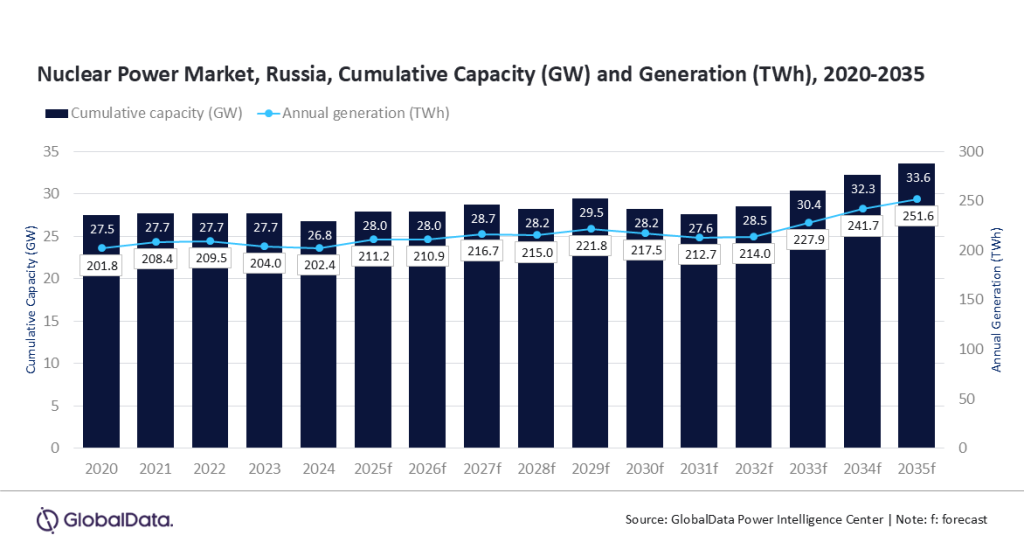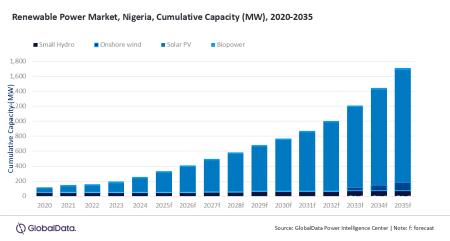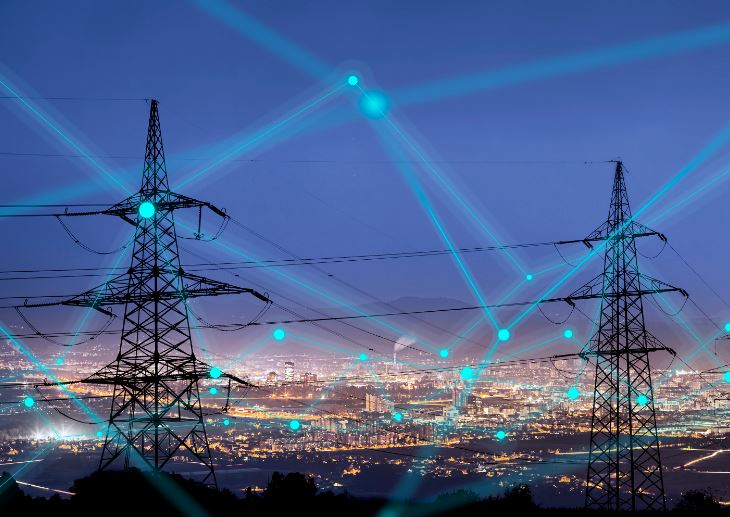
Lagos — Russia stands as a global leader in nuclear power production and technology. Following the Chernobyl disaster, nuclear power experienced a decline in public support within the country. However, in 2020, the Russian government endorsed the creation of over 40GW of nuclear power capacity by 2030.
Against this backdrop, nuclear power capacity in the country is expected to reach 33.6GW in 2035, registering a compound annual growth rate (CAGR) of 2.1% during 2024-35, according to GlobalData, a leading data and analytics company.
GlobalData’s latest report, “Russia Power Market Outlook to 2035, Update 2025 – Market Trends, Regulations, and Competitive Landscape,” reveals that annual nuclear power generation in Russia is expected to increase at a CAGR of 2% between 2024-35 to reach 251.6TWh.
According to the most recent General Scheme, the government’s objective is to elevate the share of nuclear energy in the national capacity from the current 10.4% to over 15% by 2042. This strategic initiative underscores Russia’s dedication to enhancing its nuclear power infrastructure and securing a more substantial role for nuclear energy in its long-term energy strategy.
Attaurrahman Ojindaram Saibasan, Senior Power Analyst at GlobalData, comments: “Russia is investing in advanced reactor technologies to improve efficiency and safety. The BREST-OD-300, a lead-cooled fast reactor currently under construction in Seversk, is engineered for passive safety features and a closed fuel cycle.
Additionally, the development of the RITM Series Reactors, including the RITM-200 and RITM-400, is progressing. These small modular reactors (SMRs) are designed for deployment in remote areas and for integration with floating nuclear power plants, offering enhanced flexibility and a diminished environmental footprint.”
Russia is exploring regional partnerships with Uzbekistan, Iran, and Vietnam for nuclear development and harbors ambitious plans to investigate the use of SMRs in extraterrestrial settings. In collaboration with China, Russia aims to establish a nuclear-powered lunar base by 2035, which will include a command center, power station, and scientific laboratories. While the concept may seem implausible, it showcases the nation’s expertise in nuclear technology.
Saibasan concludes: “The focus would be on SMRs to meet the increasing demand in Russia. Some of the key upcoming SMR projects include Seversk-BREST SMR, Primorsk SMR 1& 2, Zheleznogorsk MCC SMR 1, and Northwest SMR 2. Though the country may fall short of achieving its 40GW nuclear power target by 2030, it will continue to progress aggressively towards nuclear power development to ensure supply security.”



